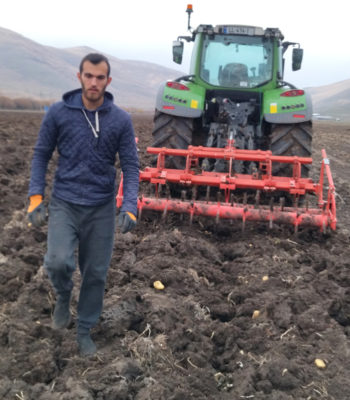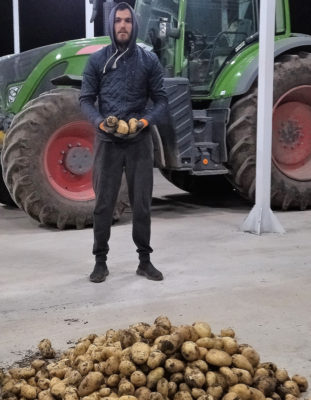
Giorgi Khitarishvili started potato farming with his parents when he was five years old, living in Vale, Akhaltsikhe, in southwestern Georgia. At that young impressionable age, he could not have imagined what kind of profits would be possible for potato.
Now 25, Khitarishvili is one of a growing group of young farmers embracing potato farmer and realizing large gains in income.
“This year the price of potato is significantly higher than previous years. Growing potatoes is a great business opportunity for young people in our region,” he says while staring out at the 1.5 hectares of land from which he harvested 50 tons of potatoes last season.
Khitarishvili is just one of several beneficiaries of the USAID Potato Program in Georgia, a three-year program supported by the International Potato Center (CIP) to boost the country’s potato production through improved varieties, innovative technologies, access to finance, and careful market development.
For his impressive harvest, Khitarishvili grew a mix of potato varieties, including Arizona, Pikaso, and Monaliza. He also planted Meskhuri Tsiteli and Tskriala with seedlings provided by USAID.

Just before planting season, Khitarishvili participated in an agronomic training workshop for potato, featuring technicians from CIP, who provided some novel ideas for raising his yields by preventing the spread of pests and diseases.
He plans to join the newly-formed Potato Producers Networks – also a feature of the USAID program – to introduce himself to other potential markets for his harvest and to continue developing his skills and knowledge about potato growing.
Meanwhile, Khitarishvili’s family is already looking forward to next year, pulling aside many kilograms of harvested potatoes to serve as planting material for the upcoming growing season. They also plan to expand the area devoted to potato on their farm.
He is not alone in this journey to higher potato yields. The USAID Potato Program in Georgia is currently working with 2310 farmers in three municipalities: Tsalka, Akhalkalaki and Akhaltsikhe. Roughly 10% of this group are young people who work side-by-side with an older generation of potato farmers to ensure that Georgians can enjoy their “second bread” for many many years to come.
